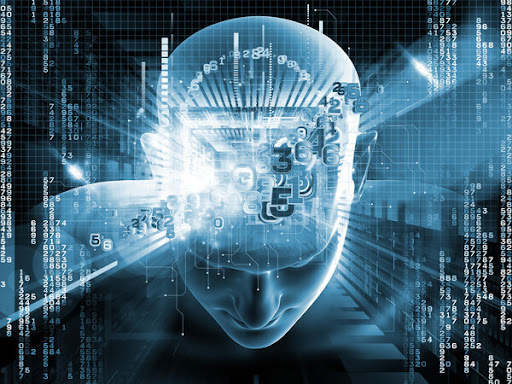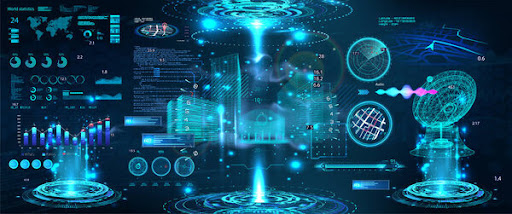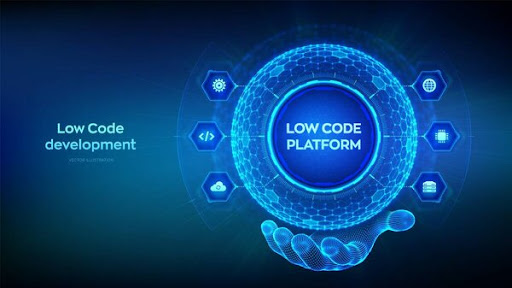Artificial Intelligence has been in the talks for a long time. The rise of the concept from classic media like movies has prompted people to learn more about AI. After all, the movie AI seemed like a high representation of such innovation from the early 1950s. Until now, the concept of Artificial Intelligence continues to expand, albeit it’s not exactly the same as Haley Joel Osment’s robot character in the movie, A.I. Artificial Intelligence.
AI leads to another application, Machine Learning. Machine Learning is more technical and practical, and the term itself sounds like it comes from the world of programming languages and traditional development.
According to Thormundsson’s article, “The market research firm IDC projected that the global AI market will reach a size of over half a trillion U.S. dollars by 2024. Precedence research suggests the market will grow to over 1.5 trillion U.S. dollars by 2030.”
The growth of AI means that all software development sectors grow with Machine Learning in no-code development included. Machine Learning is one of the most common applications of no-code. Nevertheless, the term itself may warrant an adverse reaction from people unfamiliar with no-code tools. What exactly is Machine Learning, and why does it sound too complex?
What is Machine Learning?

Machine Learning is the science of data and algorithms. Almost everything touched with data can transform into patterns and then be encapsulated with algorithms. Computers work around algorithms, and everything becomes a type of predictive process in the presence of algorithms.
Simply put, Machine Learning is the art of computers knowing how to use data and processes to imitate how humans think.
Machine Learning entails countless computing and the creation of large statistical model data sets. Imagine deriving and predicting outcomes using analysed data sets from years prior. The abilities of Machine Learning tailors with a person’s brain to logically connect things and create reliable products with patterns.
The main application of ML across industries is business analytics, allowing sectors to make more numbers-informed decisions.
The idea that robots start to become humans is very apt to the scenario. As more computers and technologies process things like human thinking via algorithms, developers have endless opportunities to create many digital solutions and products patterned around Machine Learning. In the end, no-code development is one of the most practical avenues to building Machine Learning solutions.
How does Machine Learning intersect with No-code Development?
No-code development platforms become the space for people to create Machine Learning solutions. With the advantage of not requiring coding, almost everybody can create No-code Machine Learning solutions for people. Some people don’t need to hire dedicated teams to build, analyse and apply large data models, analysis programs and data management solutions.
One of the biggest applications and products of no-code tools and platforms is automated and digital processes. Users can now make large models and accurate predictive systems using a visual interface in no-code platforms. Imagine creating a program that can rank high social media content by analysing tons of gathered data from an account.
Eventually, users will know how to maximise the use of social media with the help of an ML workflow from no-code.
Business Leaders are interested in the application of Machine Learning. As businesses become more data-driven in making the next big decision, Machine Learning solutions are becoming a normal approach and method for all types and sizes of enterprises.
Statistics and numbers often create predictive patterns saving companies tons of wasted money from sudden unpredictable consumer behaviour.
“The ability to learn and understand large volumes of data is particularly appealing to firms when looking at business analytics. IT leaders surveyed by 451 research found that a third of IT decision-makers were most interested in rolling out machine learning for business analytics.” (Feldman, 2019)
Examples of Machine Learning Platforms

Currently, there are hundreds of low-code development platforms and around 13 low-code platforms specifically for Machine Learning. In addition, there are more no-code Machine Learning platforms that are best for people who have zero knowledge of technical coding.
For beginner developers who want to expand to Machine Learning in no-code, here are some examples of no-code Machine Learning tools for every citizen developer.
CreateML
CreateML is Apple’s no-code Machine Learning development product. The platform is available in MAC OS and serves developers for creating flexible Machine Learning solutions. CreateML works mainly as a visual interface, and developers must use elements to create programs, systems and models.
As more data runs through the products, accuracy from predictive models increases, allowing users to maximise the use of the platform for future results.
Features of CreateML
✔︎ Training control features to manage training processes of model projects
✔︎ On-device training which maximises the capabilities of MAC device for the installed CreateML
✔︎ Visual Evaluation which is a new product of CreateML for allowing users a glimpse of KPI and key metric management of the projects
How to use CreateML
1. CreateML works best with MAC OS, so it’s best to start using the platform in such Apple products. First, download the Xcode File for the platform so you can run it on the Apple device.
2. Before downloading the Xcode File, Apple requires the developer credentials. For Apple Users, log in with the Apple ID and the password to get into the developer site and access various tools that aren’t only CreateML. Login to the website to the browser and download the file.
3. Install the program on the MAC device and wait for the completion of CreateML. Ensure that there is enough space and capacity for the no-code program to avoid the build-up of memory later on.
4. Start exploring the no-code platform and study the features. CreateML hosts multimodal training which means you can simultaneously run and train the various data sets for the model.
5. Start creating projects and ensure that you keep visual evaluation steps in the end to learn more about the current status of the model. The platform also has other tools that developers and users can use to modify the training of predictive models in the projects. Maximise the platform to create the next accurate data workflow.
Google AutoML
There are platforms that provide users with a more general, make-anything-you-want approach. This means that beginners may have a challenge knowing exactly what to do and where to start with the Machine Learning models.
Google AutoML is not part of that list. It’s a no-code development platform for Machine Learning that specifically targets use cases to give a more comprehensive data template to beginners. Explore the Suite for Google AutoML to know more.
Features of Google AutoML
✔︎ Google AutoML is a suite of ML products that can work together or by case-to-case application for building Machine Learning models
✔︎ Intuitive platform interface that suits beginner developers of no-code Machine Learning for efficient learning of each feature and function
✔︎ Google Cloud, the main platform of AutoML provides offers a promo: “Start building on Google Cloud with $300 in free credits and 20+ always free products.”
How to use Google AutoML
1. Google has many tools, including everything for no-code development. Visit Google Cloud to browse the developer tools of Google for all users. Google offers a free trial for its AutoML, which you can access here.
2. Google Cloud requires an account for new users to log in. If you don’t have a google account, yet create one with the link and fill up the necessary information. Some of the tools may require a subscription fee, but there are many tools for Machine Learning that won’t cost a lot.
3. The AutoML product is composed of various other Machine Learning products based on function. Explore these other products such as Vertex AI, Vertex AI Tabular Workflows, and AutoML Image.
4. Since the account only hosts a free trial, it’s best to start with new projects immediately so you can create a model that works for a specific use.
5. Don’t forget to keep iterating the model or using your curiosity in the platform. Google is known to provide encompassing programs for all developers, beginner citizen developers included.
Obviously AI
Obviously AI is one of the best no-code platforms for developing Machine Learning models across all industries. The platform has two products: Auto ML and Time Series.
Both models are available for users to use to create fast predictive models for large data sets. Many big brands across the globe use Obviously AI for their Machine Learning capabilities. Brands such as Learning Leaders and FinSANA use Obviously AI.
Features of Obviously AI
✔︎ Obviously AI has an AI university that can help beginners learn more about no-code Machine Learning
✔︎ Part of the offerings of Obviously AI is Robotic Process Automation where automated workflows execute upon reaching the prediction, i.e., “x and y execute when 80% prediction probability”
✔︎ The platform hosts function models for Classification, Regression and Time Series
How to use Obviously AI
1. Sign up on Obviously AI no-code Machine Learning platform here. There are various price plans for the platform. Utilise the Free plan to learn more about the platform and sign up for the Pro and Pro Plus accounts when you want to use the platform for good.
2. The platform divides a lot of products and has pre-made templates for many classifications. There are models made for certain industries. There are common use cases that can help you fast-track and create the predictive model that you want to use.
3. Explore the website and the products to find the capabilities of Obviously AI. Each platform has its interface to allow new users to explore the platform itself and build models out of the given elements on the screen space.
4. Obviously, AI has a dedicated in-house team of data scientists to help users with more specialised cases. Contact the support team for a dedicated data scientist for more complex data models.
5. Integrate APIs and other external third-party applications to the data models.
Data Robot
Data Robot is one of the most known platforms that provide Machine Learning capabilities without the requirement for technical coding experience. Data Robot is a large online suite of Artificial Intelligence tools available for users. Its ML tools consisted of AutoML, Auto Time Series and Notebooks.
Many previous and current users have given positive reviews about Data Robot, contributing to its popularity as a no-code Machine Learning tool.
Features of Data Robot
✔︎ Data Robot offers Composable ML to allow users to create automated ML processes with the created data models
✔︎ The platform allows model creation for complex data sets with a lot of factors with the use of Eureqa Models
✔︎ Data Robot provides a Deep Learning template that helps users get ready for production
How to use Data Robot
1. Create an account in the Data Robot platform. There are different accounts and pricing plans for Data Robot.
2. For many users, there’s a free account as a promo from Data Robot to new people on the platform. Use that free trial to explore the platform.
3. The platform is an all-encompassing no-code platform for Artificial Intelligence. Create projects and models with trial data sets you have.
4. Create an automated workflow that executes when certain numbers are predicted from the models.
5. Scan the platform for resources to learn more about what you can do in Data Robot.
Conclusion: Is No-code Machine Learning a practical application to any business?
Is No-code Machine Learning the future of all industries and sectors? There are many capabilities and possibilities that can happen with a tool that patterns after the cognitive functions of the human mind.
While the idea that machines can be as smart as humans seems likely, there are still many aspects of ML that only humans can address. The growth and development of AI and ML are still far from how an actual human thinks.
ML works best around numbers, analytics and tons of data. The more human approach to things can hinder businesses from properly growing as a business. Use the no-code ML as a guide rather than a complete data model tool that focuses more on the predictive approach rather than the present.






